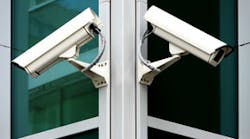The need to understand how to maximize the network or electronic layer of infrastructure is imperative to maximizing economic viability of any enterprise as well as providing security and surveillance capabilities to it. This task is difficult, however, when you consider how quickly things change. For instance, there's a new perspective on the use of network infrastructure. Just like single-lane dirt roads evolved into the multi-lane superhighways of today, single-function voice networks have to be updated to a multi-channel, multi-gigabit network that can handle the explosive growth of video and other convergent applications. This leads to an important question: Are you buying the wrong equipment for building or campus surveillance because your on-staff or outside expert only reads spec sheets?
New planning and design concepts are creeping into the traditional approaches to buildings as well as intelligent business campuses that support the next-generation industrial parks. As a result, architects and design engineers of every discipline have to augment their understanding of what needs to be added from a network-centric perspective.
Infrastructure issues have evolved from traditional tenant requirements to new intelligent amenities that are now “must-haves,” instead of “hoped-fors.” In order to understand this new phenomenon, identifying the sub-layers of the framework of critical infrastructure is necessary (Chart). Many applications within these sub-layers must be addressed, but the ones with significant growth today are video and security/surveillance applications — both of which use camera technology.
Aiming for quality
Video surveillance and the use of more cameras for various enterprise functions on IP networks are making many public and private organizations look at cameras as well as supporting storage devices. There is also an industry trend where analog cameras are being replaced by IP cameras, because they can be integrated into Web-based applications instead of dedicated single-function networks. Because new and retrofit projects can get expensive, the most common question always arises: Are we getting our money's worth?
From casinos to museums, the use of cameras to secure areas continues to grow. For example, a typical casino has in excess of 1,300 cameras strategically placed to watch patrons and premises while a museum like the Chicago Museum of Science & Industry has more than 300 cameras. Unfortunately, some experts are using the wrong yardsticks to measure camera competitors, and many are looking for features that are meaningless in comparing quality, longevity, and overall service.
Choosing the right camera
There are six criteria you should focus on when deciding on which camera best fits the needs of a particular project, including: picture quality, low-light operation, motion picture, innovative design, reliability, and impact on network performance.
Picture quality (and color accuracy)
Both are very important. All of the major manufacturers use the same charged coupled device (CCD) chip, but the big differentiator is how the colors are processed. That's the big trade secret.
Most cameras have one CCD chip; however, better models that offer broadcast quality have three. Don't buy based on comparing spec sheets and pixel counts. Compare the actual color results.
Low-light operation
If CCDs are the same, why are there differences in quality? In addition to the proprietary processing of colors, check the lens and find out what you're getting as a usable signal, especially in low-level lighting situations. Some lenses are cheap plastic and will not give you the resolution others will. Lux (one of the camera lens measurements) does not tell you how the camera operates. Few manufacturers will give you all of the measurements of the camera in order to make a real comparison of how much light is actually processed.
You might buy a six Mega-pixel camera, but it's only as good as the lens it has. Some consumers buy based on the Mega-pixel rate of the camera only to find out the lens cannot provide the “capture” of the resolution the processor can handle.
Most cameras are rated at 30 frames per second (FPS), but some are actually 60 FPS. Crisp resolution is more important than frame rate. Did you know that if you go to a movie theater, the movie you're watching is only 24 FPS?
Motion picture
Security at 30 FPS is overkill. Instead of 30 FPS, it's recommended to have five to seven frames per second and make the resolution crisper. Here are three tips for better use of security cameras:
- Control the frame rate (slow down the frames per second).
- Adjust the resolution (crisper images).
- Adjust the aspect ratio.
Innovative design
Check the camera's mechanics. Plastic gears will crack in cold temperatures. Software management systems are tied to cameras. Here are some questions you need to ask. How are they licensed? Are they free? What happens if you switch out a camera? Do you need to re-license the new camera?
Reliability
Check the guarantees. Is it a one- or three-year guarantee? What is the camera's overall MTBF (mean-time-between-failure)? There are many other issues to check. Reliability should not be looked at lightly for critical applications as well as long-term ease of maintenance. As with any technology used in all-weather conditions, you get what you pay for — there are no bargains. If you have a camera on your garbage dumpster, you can afford some downtime. If you have a camera on a door leading to the cash room in a casino or a nuclear reactor, that's a different story.
Impact on network performance
How do you integrate the cameras into your overall enterprise? Is there network management software available? Is it free? Can you run the network management software on a PC? Most information technology (IT) experts say you can save money by running the software on an existing PC. However, this is wrong.
A PC is optimized to run data applications, not video applications. Do they know how to tweak everything inside, including the motherboard for video applications? There are many technical questions that include understanding the maximum speed of the internal PC bus architecture (133Mbps). Don't let the techies sell you on their ability to convert a PC to process video network management. Buy the network video recorder (NVR) that integrates with the cameras. That way, you're guaranteed the equipment was designed specifically to mesh together, and all you have to call is one vendor instead of two or three when something goes wrong.
Best practices are a moving target
Don't fall for any vendor or system integrator that trumpets the tired phrase, “We have best practices in our design approach.” When it comes to technology, what was a great guideline last year could be totally obsolete this year. Beware of getting last year's solution to handle this year's problems.
When all is said and done, there is no cookie-cutter approach to implementations. In fact, many become a custom integration that needs to fit your requirements. Too many vendors and solution integrators try to sell you on fitting your business into their standard package instead of fitting their package into your unique business. Remember, this when a vendor tries to sell you a one-size-fits-all solution. Also remember the phrase, “You get what you pay for.” If you want quality, you won't find it at fire sale prices.
A certified infrastructure consultant and expert witness on major network infrastructures, Carlini, MBA, is president of CARLINI & ASSOCIATES, INC., based in East Dundee, Ill. He can be reached at [email protected].
Sub-layers of the framework of critical infrastructure.






